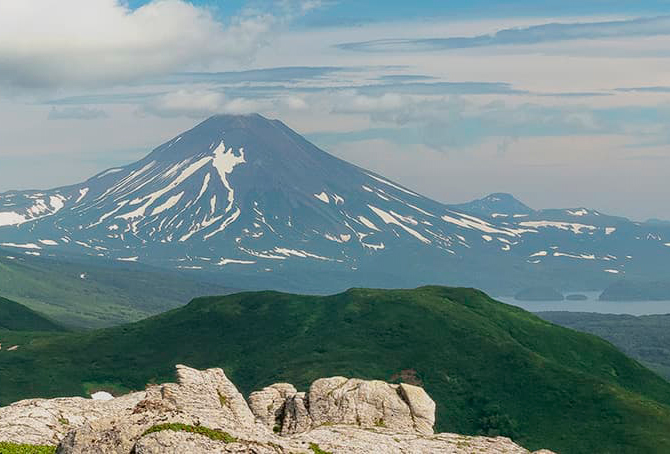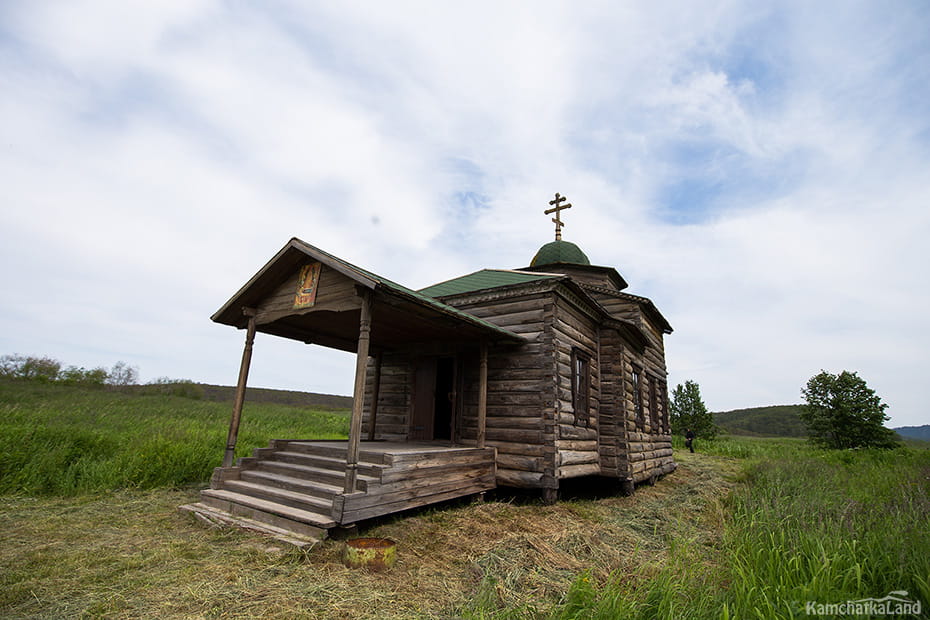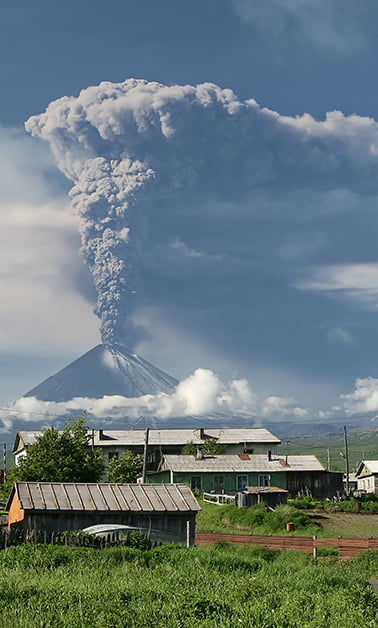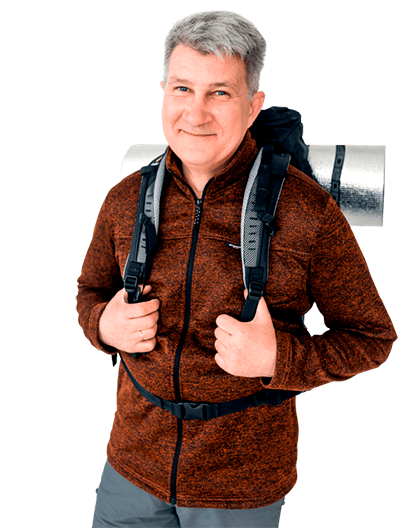
Ust-Kamchatsk village
The Ust-Kamchatsk village is located on the eastern coast of Kamchatka. Its history is dramatic and begins in the 18th century. Nowadays, a modern fish factory, a seaport, and a wind power plant operate there.
On the eastern coast of Kamchatka, there is a village Ust-Kamchatsk, where people are mainly engaged in fishing and processing of seafood. There is also a commercial seaport. More than 520 km separate the village from Petropavlovsk-Kamchatsky but if you take into account the distance along the road, it is more than 740 km. The conditions are severe here, the humidity is high, and the average air temperature for the year is about zero degrees.
Ust-Kamchatsk Village History
Ust-Kamchatsk received its current name in 1918, before that it was called Ust-Primorsk, and even earlier the wintering place located around there was called Nizhnekamchatsk. It was laid at the very beginning of the XVIII century, and then a burg was built around it. By 1731, there were already several houses. The need to protect the southern borders of Kamchatka forced to send here a detachment of Bolsheretsky Cossacks, who became the first resident population of Ust-Primorsk. The village received the status of a Cossack settlement.
The newcomers did not get along very well with the local residents. Since ancient times, Itelmens lived in these places, and the indigenous people did not like the appearance of the Cossacks, who began to act as masters and oppress the indigenous ethnic group. Armed conflicts began, and one of them was very dangerous for the Cossacks. The crew of the boat located in these waters and led by Captain Ian Gens came to the rescue. Together, they managed to crush the Itelmen resistance. However, the Cossacks had to leave the burg and start a new construction down the river, about 90 km further from their former place.
Such a practice was commonplace in those days. Since there were few houses and they were built in wood, the construction did not take much time. In the XVIII century, future Ust-Kamchatsk was a developing settlement. The ships came here, the First Kamchatka expedition by Vitus Bering was based here. To get fur on the Pacific Ocean islands, they needed ships, so the villagers began to build the so-called schitiks (flat-bottomed riverboats) for the hunters.
It was necessary to store the furs somewhere, that’s why they began to build warehouses. In addition, there were shops where hunters and sailors bought the necessary foodstuffs and all kinds of things. The authorities felt concerned about uncontrolled hunting for fur animals. They especially did not like it when the hunters were from foreign ships, that is, wealth flowed from the country. It was necessary to tighten control and stop poaching. Thus, Ust-Primorsk became a border village with a security post.

When Vasily Zavoyko became the governor of Kamchatka, the situation in Ust-Primorsk improved. He noticed that it stands on the banks of the Kamchatka River, which was of great transport and economic importance for the peninsula. They built a shipyard, from which various small ships went along the river and coast. Villagers were still engaged in hunting and fishing, a small detachment of Cossacks performed their security functions.
By the beginning of the twentieth century, the population of the village increased. The number of caught fish was more than necessary, and there was the possibility of industrial production at last. In 1910, a fish-canning factory was built here. It was actually foreign production: the Norwegian became the director of the plant, the Danish was an engineer, and the Japanese were workers. Local residents did not have the skills sufficient to work in such a production. Almost all the products of the fish factory, canned salmon, were exported to England.
Soviet power in Kamchatka was established with difficulty but, ultimately, successfully. The villagers started a new life. However, in April 1923, a terrible incident awaited the inhabitants of the village. Ust-Kamchatsk is located in a seismic hazardous area, and there is also a great danger of tsunamis. A giant wave covered the village. An earthquake that began at three in the morning preceded the tsunami. All the wooden structures were smashed to pieces. Twenty-three people were killed. The consequences of the cataclysm were terrible for the village. Some of the survivors moved to another place, others remained and began to rebuild the village. Those who left established the village Krutoberegovo on the other side of the Kamchatka River.
The fish cannery and other enterprises were destroyed. The complete destruction of economic life would mean the end of the village, and they decided to rebuild the plant. Four years later, the Soviet government agreed with the United States on the purchase of new equipment, and the fish factory started operating. Its products acquired strategic importance during World War II. The canned goods produced here were used to supply the Soviet Army and the troops of the anti-Hitler alliance. During the war, the airport built back in 1937 and located on the other side of the river, also operated.
In the postwar, the development of the village continued. The opening of the seaport for merchant ships marked 1955. This was the second facility of that kind in Kamchatka.
Meanwhile, the threat of another natural disaster remained real. Ust-Kamchatsk was widely scattered in a dangerous area. Therefore, in the middle of the twentieth century, they decided to move residents higher, to a safer place and began to build a residential community on Cape Pogodny. Now people live both in Pogodny District and in the old place where all the main enterprises are concentrated.
In 2010, another disaster hit Ust-Kamchatsk. This time, it was the eruption of two volcanoes — Klyuchevskaya Sopka and Shiveluch. All institutions were closed, the airport, transport stopped because of the large amount of ash that fell on the village.
Ust-Kamchatsk at present time
The fish cannery, which products are sent both to Russian stores and for export, and the seaport where ships continue to call, work successfully now. There is also a log sort yard. Since 2013, the village has been arranging well. In addition to repairing houses, building playgrounds, park areas, etc., they built a wind-driven power plant. Small business in the village is connected with fish trade.
There are many children in Ust-Kamchatsk, which indicates that the population here is young. There are kindergartens, schools, including an art school. Transport links with the rest of the world are maintained via air and bus services.
Sightseeing in Ust-Kamchatsk
The main attraction of the village is Ust-Kamchatsk itself, a settlement in the very east of the country that lives in harsh conditions. Now it is divided into two neighborhood units — the one is located below, with low-rise wooden houses, and the other is on Cape Pogodny with five-story buildings of bright coloring. Because of strong winds, many houses are sheathed with metal sheets, common for Kamchatka.
You can touch the history of the village by visiting the site of the former burg where a historical and cultural center has been built. There is the Church of the Assumption of the Holy Mother-of-God. In the XVIII century, Cossacks built a wooden church on this site. The current one is a later building of the 19th century. This is the oldest wooden structure preserved in Kamchatka. There are no large museums in the village but you can visit the school regional museum. The exposition is not large but gives an idea of the features of these places.
You can admire the dangerous neighbors, volcanoes, right from the windows of houses. Kamchatka nature is shown here in all its glory: mountains, the ocean, river, forest. Not far from the village, there is Nerpichye Lake with its rich fauna. The name indicates the lots of seals, there are different types of fish in its waters, especially herring and salmon, there are many birds, as well, — gulls, puffins, and others.
Ust-Kamchatsk is a remote place but with its own dramatic history and prospects for further development.
Popular tours with Kamchatkaland
Ready-made packages for your travel and vacation in Kamchatka






